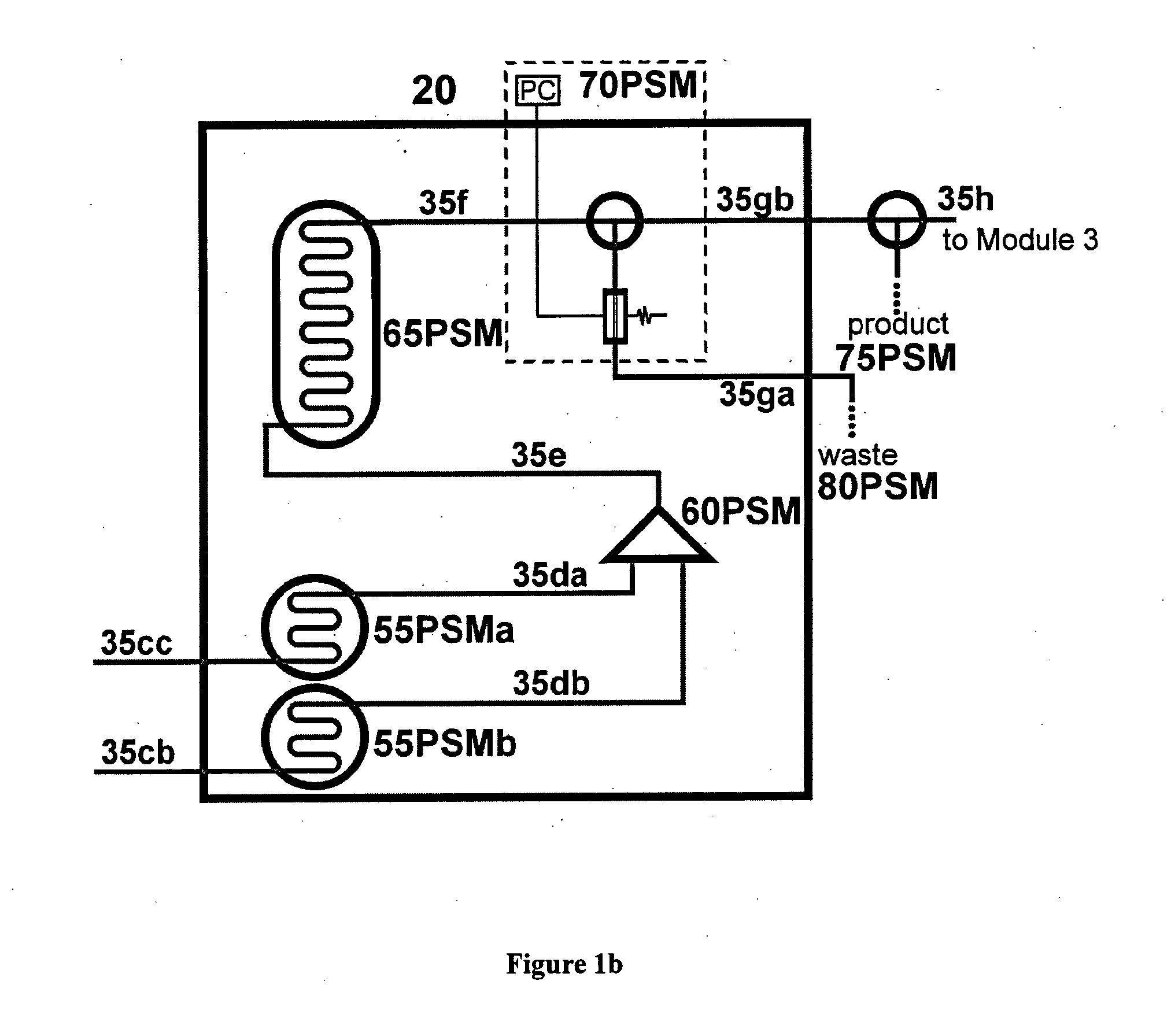Reactor for the manufacture of nanoparticles
a nanoparticle and reactor technology, applied in the field of apparatus and a manufacturing method of nanoparticles, can solve the problems of affecting the size of manufactured nanoparticles, wide nanoparticle size distribution, contamination of nanopartides due to milling materials, etc., and achieves low melting temperature and high boiling temperature
- Summary
- Abstract
- Description
- Claims
- Application Information
AI Technical Summary
Benefits of technology
Problems solved by technology
Method used
Image
Examples
example 1
Preparation of CdSe Nanoparticles
[0081]Preparation of Cd particle precursor solution. 1.15 g of cadmium acetate was mixed with 45 ml of squalene and 3.5 ml of the stabilizer oleic acid at room temperature furthermore 20 ml of the stabilizer oleylamine was added. The resulting suspension was evacuated and purged with nitrogen gas. The suspension was then heated to 150° C. to form an opaque slightly yellow solution. The solution was then degassed at reduced pressure for 2 hours at 100° C. before being allowed to cool to room temperature. The mixture was then evacuated and kept under an inert atmosphere of nitrogen gas.
[0082]Preparation of Se particle precursor solution. In a glove box at room temperature 2.0 g of selenium was dissolved in 17 ml trioctylphosphine. To the solution was added 53 ml of squalene. The resultant solution was stored in an inert atmosphere.
[0083]Preparation of CdSe nanoparticles. The cadmium and selenium solution were connected to 2 pumps and aspirated in the s...
example 2
Preparation of NiPt Nanoparticles
[0085]Preparation of Ni particle precursor solution. 0.84 g of nickel acetate and 0.90 g of 1,2-hexadecanediol was dissolved in 192 ml of squalene and 4.0 ml of the stabilizer oleic acid and 4.0 ml of oleylamine was added (by injection). The mixture was heated for 3 hours at 80° C. to form an opaque blue-green solution. The solution was then evacuated and purged in an inert atmosphere of nitrogen gas.
[0086]Preparation of Pt particle precursor solution. A mixture of 1.26 g of Platinum(II)-acetylacetonate, 80 ml of 1,2 dichlorobenzol and 120 ml of the stabilizer squalene was heated to 50° C. The resultant solution was stored under a nitrogen atmosphere.
[0087]Preparation of NiPt nanoparticles. The nickel and platinum particle precursor solutions were connected to two pumps and aspirated in the solvent preparation module 15, the temperature of nucleation chamber 60 is set to the intended nucleation temp. The temperature of the growth chamber 65 is set to...
example 3
Preparation of PbTe Nanoparticles
[0089]Preparation of Pb particle precursor solution. 24.3 g of lead acetate was dissolved in 320 ml of squalene and 64 ml of the stabilizer oleic acid and 16 ml of oleylamine was added (by injection). The mixture was heated for 3 hours at 80° C. to form a yellowish solution. The solution was then evacuated and kept stored in an inert atmosphere of nitrogen.
[0090]Preparation of Te particle precursor solution. 4.78 g of tellurium was mixed with 150 ml of trioctylphosphine and 250 ml of squalene. The resultant mixture was then heated to 250° C. The resultant solution was stored under a nitrogen atmosphere.
[0091]Preparation of PbTe nanoparticles. The lead and tellurium particle precursor solutions were connected to two pumps and aspirated in the solvent preparation module 15. The nucleation chamber 60 temperature was set to the intended nucleation temperature. The growth chamber 65 temperature was set to the growth temperature and the preheating chamber ...
PUM
| Property | Measurement | Unit |
|---|---|---|
| temperature | aaaaa | aaaaa |
| temperature | aaaaa | aaaaa |
| molar ratio | aaaaa | aaaaa |
Abstract
Description
Claims
Application Information
 Login to View More
Login to View More - R&D
- Intellectual Property
- Life Sciences
- Materials
- Tech Scout
- Unparalleled Data Quality
- Higher Quality Content
- 60% Fewer Hallucinations
Browse by: Latest US Patents, China's latest patents, Technical Efficacy Thesaurus, Application Domain, Technology Topic, Popular Technical Reports.
© 2025 PatSnap. All rights reserved.Legal|Privacy policy|Modern Slavery Act Transparency Statement|Sitemap|About US| Contact US: help@patsnap.com



